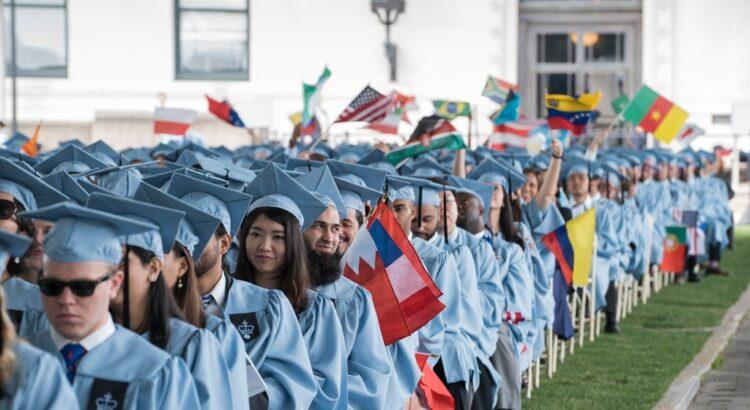By Borhene Chakroun, Director of the Division for Policies and Lifelong Learning Systems at UNESCO
This week marks the one year anniversary since the entry into force of the UN’s first Global Treaty on Higher Education, a landmark agreement that establishes universal principles for the recognition of higher education qualifications.
Opening new avenues for further study and employment across borders, the Global Convention promises to be a game changer for higher education – bringing about the fundamental changes needed to make higher education more equitable, accessible and inclusive.
It comes amid a dramatic shifting higher education landscape characterized by expansion, massification, diversification and digitization. More than 250 million students are now enrolled in higher education, up from 100 million in 2000 and 180 million in 2010.
Meanwhile, student mobility has increased more than threefold over the last two decades, with more than 6 million learners now studying abroad -a number that has tripled in the last two decades and is set to do so again. Half of these internationally mobile students are studying outside their region.
The Global Convention promotes fair, transparent and non-discriminatory practices for recognizing higher education qualifications.
This will prove especially important for refugees and displaced persons who often have difficulty providing documentary evidence of their qualifications.
It’s also a sign of how the right to education is evolving towards a vision of lifelong learning, including the right to higher education.
So far, 28 countries have ratified the convention, representing a quarter of the world’s internationally mobile student population. Another 30 countries are at advanced stages of the ratification process.
This week, UNESCO is convening an extraordinary session of the Intergovernmental Conference of the States Parties to examine the Global Convention’s work programme for the next year. The session will also be attended by many observers including key global and regional higher education stakeholders as well as the presidents of the regional convention committees. This is the first meeting since a historic convening of State Parties last July to chart a course for implementation.
What will it take to make the Global Convention a success?
Five key dimensions will determine the effective implementation of the Global Convention – in line with the recommendations of UNESCO’s recent World Conference on Higher Education:
- Information exchange: Three regional networks of information centres are already in operation – the Asia-Pacific Network of National Information Centres (APNNIC), European ENIC-NARIC and the Regional Network of Information Centres in Latin America and the Caribbean (CINLAC). These must be capitalized upon to create a global network under the Global Convention.
- Quality assurance: Education systems and institutions must trust each other if education and multilateral cooperation is to truly transform. The Global Convention is the first multilateral agreement which addresses quality assurance and promotes and affirms the role a culture of quality plays in establishing trust between higher education institutions and systems.
- Inclusion: Higher education systems need to put greater emphasis on inclusion, flexible learning pathways and recognition of prior learning. This is particular important given the diversification of higher education including the increasing role played by private providers and EdTech, as well as the emergence of higher technical and vocational education and training.
- Technology: The digital transformation of education can increase access to higher education, both through the possibilities of virtual mobility and the enhanced portability of qualifications. At the same, online provision powered by artificial intelligence, virtual mobility and digital credentialing in an era of massification, bring with them their own new challenges both for quality assurance and for the data protection and security of students, all of which need to be addressed in the context of the Global Convention.
- Data: While there is always a need for more and better data, the number of countries reporting to the UNESCO Institute for Statistics (UIS) continues to decrease, with the reporting rate in some regions as low as 25%. With this in mind, UIS has just launched the 2024 Survey of Formal Education and countries’ participation in the higher education questionnaire is key for accurate monitoring.
If these key areas are addressed, the Global Convention will indeed live up to its potential as a game changer for higher education. UNESCO is calling on all countries to ratify this important Convention to make our ambitions become a reality to unleash the talent of our youth around the world.
The post One year into the Global Convention on Higher Education – what will it take to make it a gamechanger? appeared first on World Education Blog.







 Users Today : 18
Users Today : 18 Total Users : 35469652
Total Users : 35469652 Views Today : 18
Views Today : 18 Total views : 3536379
Total views : 3536379